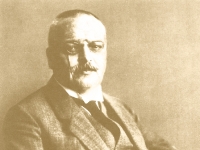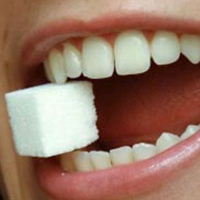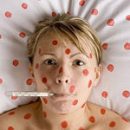What is a hyperstoxic form of schizophrenia? How is the treatment of hyperstoxic shape of schizophrenia? Answers to these questions you will find in the article.
Content
Hyperstoxic shape of schizophrenia
The hyperstoxic form of schizophrenia is one of the options for onairoid catatonium, which proceeds with various psychotic and somatic disorders, high temperatures and disorders of consciousness, indicating the superheavy of intoxication, so this form of schizophrenia was called hypecoxic. Extremely acuity, a stormy flow, a combination of acute mental and somatic disorders can lead to a fatal outcome, which necessitates the need to provide patients with urgent medical care.
The disease begins suddenly, sharply and immediately takes a rapid flow. The most important symptom for early diagnosis is high temperature. Initially, it can be subfebrile (37.3° - 37.9 °C), but quickly rises and reaches high numbers. In other cases, the temperature curve is incorrect, febrile swelling occur at different times of the day, and in the intervals the subfebelitet is preserved. Fever is accompanied by tachycardia, which is significantly pronounced than at moderate temperature.
The appearance of the patient is very characteristic: a grayish-earthly, less than a hyperemic face with a sharp features, spawned shiny eyes, sometimes the sclers are injected, a wandering or fixed look, a large drop of sweat on the forehead, dried dry lips, cracks in the corners of the mouth, a dry tongue, covered with white or brown raid. Less often there are profuse sweat, hemorrhage on the skin and mucous membranes, trophic disorders (such as bedding) on the skin. The general condition of the patients is rapidly deteriorating - blood pressure drops, pulse and breathing are rapidly. Patients lose consciousness, coma. The deadly outcome is usually coming on the 7-10th day of illness from acute vascular failure against the background of brain edema.
Treatment of hyperstoxic shape schizophrenia
 Only timely intensive therapy can change the heavy outcome of febrile catatonia. One of the most effective methods of its treatment is electrosalproof therapy, which is carried out in combination with other activities aimed at eliminating the toxic manifestations of the disease. These drug activities include intravenous drip administration of prednisolone (up to 120 mg / day) on a solution of glucose or isotonic solution of sodium chloride. To stabilize the vascular tone, Cordamin, Meston, norepinephrine, are also prescribed, if necessary, they are used several times a day. In cases where intravenous drip administration is carried out continuously for hours or days, the needle is introduced into a subclavian vein. To prevent possible thrombophlebitis, the place where the cannula is inserted, carefully treated with heparin. A mandatory component of the drug mixture introduced through a dropper is a solution containing potassium and sodium, as well as dehydrating agents.
Only timely intensive therapy can change the heavy outcome of febrile catatonia. One of the most effective methods of its treatment is electrosalproof therapy, which is carried out in combination with other activities aimed at eliminating the toxic manifestations of the disease. These drug activities include intravenous drip administration of prednisolone (up to 120 mg / day) on a solution of glucose or isotonic solution of sodium chloride. To stabilize the vascular tone, Cordamin, Meston, norepinephrine, are also prescribed, if necessary, they are used several times a day. In cases where intravenous drip administration is carried out continuously for hours or days, the needle is introduced into a subclavian vein. To prevent possible thrombophlebitis, the place where the cannula is inserted, carefully treated with heparin. A mandatory component of the drug mixture introduced through a dropper is a solution containing potassium and sodium, as well as dehydrating agents.
The heat is possible to eliminate the parenteral administration of non-steroidal sprinkle preparations. With the increasing edema of the brain, along with Magnesia sulk acid, used furosemid, urea, mannitol. Recently, the preparations of metabolic action (piracetam, nootropyl at 1200-2400 mg / day) are widely used. The results of the treatment of patients in many ways depend on the organization of the work of the nurse: all the necessary drugs, sterile solutions, the tools must be prepared in advance, always be in the department and vary depending on the time of their shelf life.
In the treatment of such patients, a special role is given to the care of them. Special posts should be provided, since each case of hyperstoxic schizophrenia should be considered as an emergency in the department. Patients need constant supervision, continuous care. We must always follow the cavity of the mouth of patients, lubricate lips, have enough liquid (tea, juices). If patients can not drink independently, it is recommended to type liquid into a joint syringe (or in another syringe) and small portions to enter the oral cavity. No less important skin care and hypostatic pneumonia prevention. The nurse must dry sweat on the face and body of patients, alcohol process the skin, often turn the patient in bed, to transfer bed, prevent the folds to the sheets.
IMPORTANT Systematic observation of places on which there may be baggles or bullous rashes (heels, ion-colored muscles, buttocks). Any, even the smallest changes in the skin in these areas must be carefully described and brought to the attention of the attending or duty doctor. Diaries of duty nurses must reflect all changes in the state and behavior of patients during duty.
It is necessary to emphasize that the salvation of such patients is a difficult task, but quite feasible thanks to the timely and full-fledged assistance to this patient, which is impossible without the participation of nurses.









